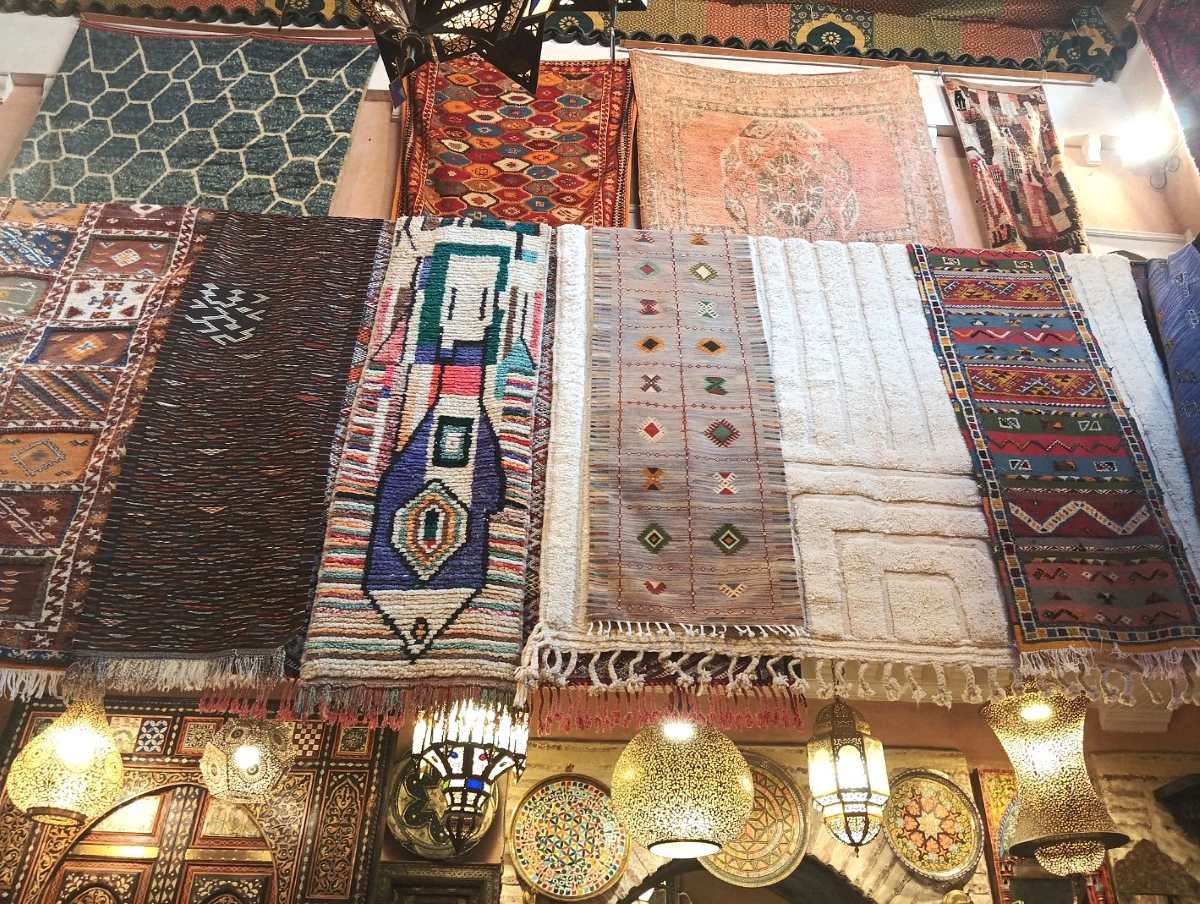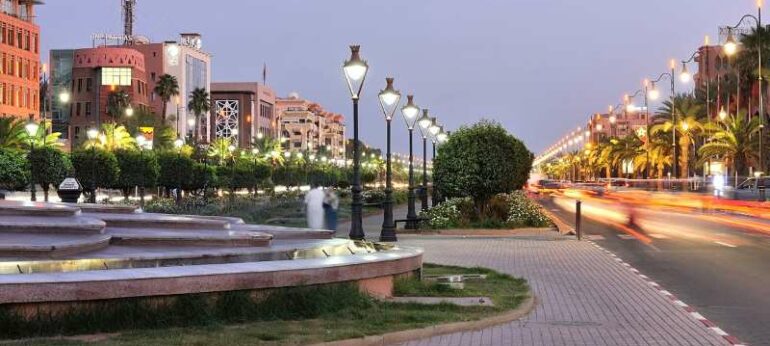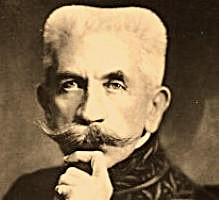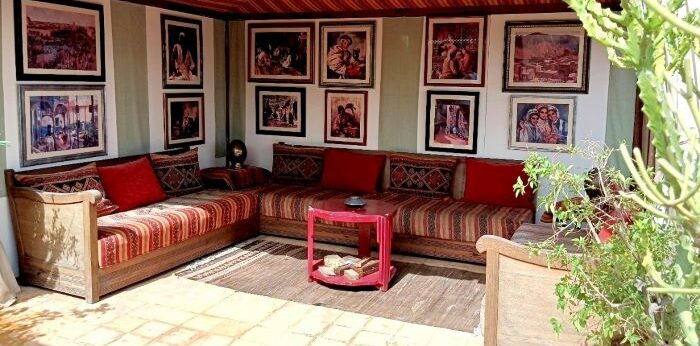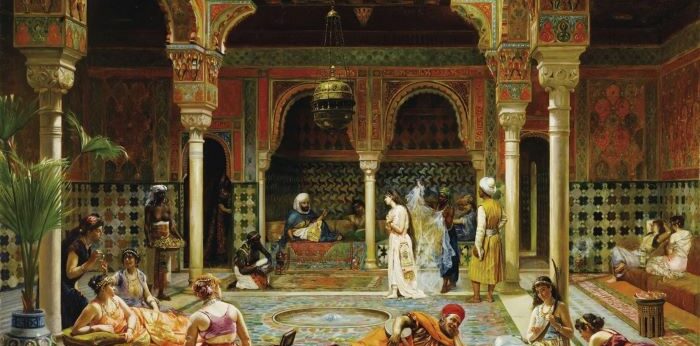“Draw me a sheep…”
If they did not exist, we really would have to invent them! If they did not exist, this article would not be necessary! Finally, we never thank them enough! They share and even give men what they have most precious: their fleece!
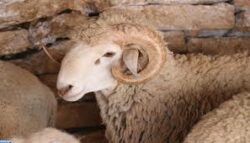
Boujaâd sheep
THANK YOU, sheep!
Siroua! You are white or black, you live in the south of Morocco in the mountains of Jbel Siroua, the highest peak of the Anti-Atlas. Your wool is the best, the softest and silkiest.
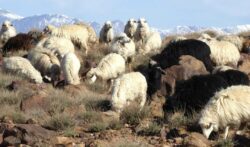
Siroua sheep

Sardi, Boujaâd, Beni Guil, Blanche des montagnes, D’man, Saghro, Beni Hsen… you live in herds in all regions of Morocco, you will let yourself be sheared once a year. Your long and smooth fleece will give birth to an ideal wool for weaving. Thank you sheep!
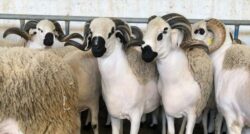
Sardi sheep
The birth of an art
At the beginning of weaving, many centuries ago, there was only the utility, the necessity for the Amazigh mountaineers to warm themselves, to cover themselves with blankets, to isolate themselves from the cold and the hot, to shelter, cover the floors and sides of the inside of the tents…
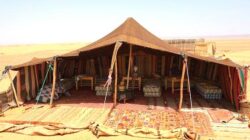
The loom was often placed in the centre of the room or tent for the nomads, so the weaver woman could continue to lead her household. The aesthetic and artistic concern will arrive later, when the exchanges with other peoples and the first commercial interactions will develop. With this desire to make beautiful, a language will also appear.
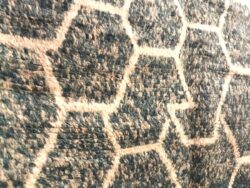
Detail Tazenakht rug Dune Galerie
Symbolic signs, geometric patterns, stylized representations of nature or the animal world, sometimes telling legends, express the relationship to earth, heaven, stars, evoke the themes of family, life and death, manhood, femininity, fertility, spirituality…
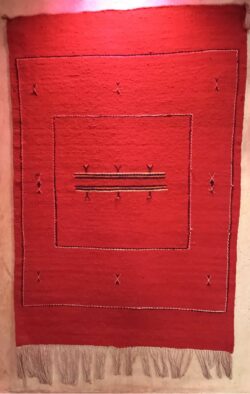
Akhnif rug Riad Dar Taliwint
Decrypting the language is most of the time very complex. A part of mystery is always written in the carpet! Traditionally, women use the art of weaving to create these carpets that have been the pride of a whole country for so long and that have also seduced the world. They put all their patience, their precision and probably their secret messages… Weaver women can talk about their environment but also about their inner world.
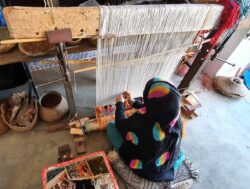
It goes without saying that each handmade carpet is a unique work of art. One day, a buyer will fall in love with the colours, lines, materials and patterns. He will understand the language and make it his own. Like in front of a painting, a whole sensitive universe will open to him.
The wool
The essential material of the Moroccan Amazigh or Berber rug is therefore wool. Sometimes goat hair, dromedary camel fur, cotton threads and even silk or sabra can be found but shush!
Let’s say it once and for all: Moroccan carpet is made of WOOL!
Once the sheep shearing is completed (once a year), the material is washed carefully and then carded, combed, to unravel the fibers. Then the yarn is spun to obtain different thicknesses. The natural environment, food play a role in the quality and diversity of wool.
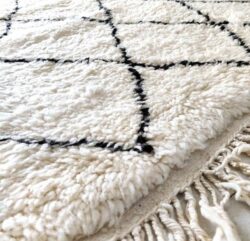
The colours
It is important to understand that the color in the art of Moroccan rug exists only for itself. It never represents the colour of anything. It is an element in itself of ornamentation, decor, language. It is therefore often full, raw, intense, vivid, saturated with all the nuances that this implies. The colours thus keep their symbolical values which have for centuries culturally validated.
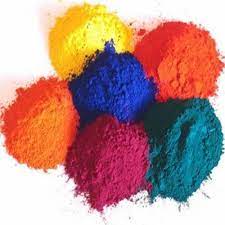
Of course many synthetic dyes are available but in Morocco tinctorial plant-based dyes are still widely used in the production of handmade carpet.
The dyeing process takes place in several complex steps until the desired colour is obtained. The use of local natural dyes, in addition to respect for the environment, perpetuates tradition, quality, history of a secular art, anchoring a strong cultural identity in a region.
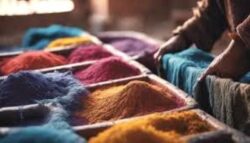
The symphony of colours can begin. Magicians will raise their wands!
For the reds, oranges and browns and all their shades we will use cochineal, dyers madder (Taroubia), henna, sumac, oak bark.
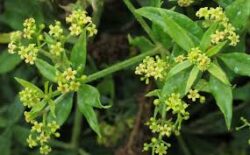
Dyers madder
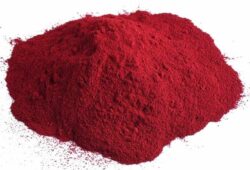
For the blues, indigo (Nila). The bark of walnut or oak can generate beiges or greys. The yellows will come from the reseda, the weld, a kind of broom called Achfoud that grows wild in Siroua massif, from the bark of pomegranate, saffron.
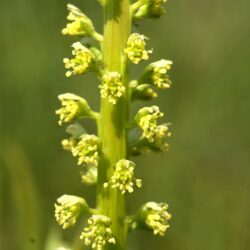
Reseda
Iron sulfate and pomegranate will make a dense black. The list is not exhaustive as fixators or mordants such as alum (Azarif), iron, copper, wood ash, baths of crushed bitter oranges, wild grape juice, sorrel juices will modify the color palettes in order to better perpetuate them. Many other steps in a process of washing and re-washing, drying in the sun will follow to maintain colors over time.
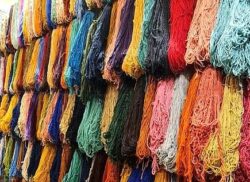
And let the carpet be!
This wool once treated will be tied, woven or embroidered on looms.
They are made of wood, horizontal (easily removable) or vertical (fixed).
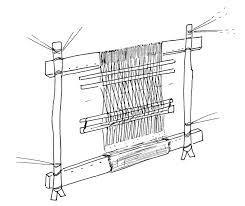
In both cases, the loom is a frame, on which the warp threads, constituting the armature of the carpet, are stretched in order to receive the knots. We assemble the warp and weft (vertical and horizontal yarns) before starting weaving, knotting.
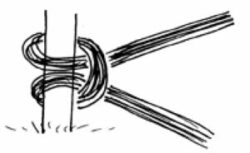
The flat woven carpet will be thinner, lighter, hairless. It can also easily hang on walls like a painting. A carpet woven by hand on the loom is not always perfectly straight. This should not discourage you.
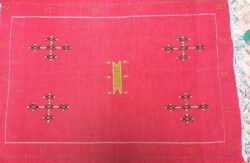
Akhnif rug Riad Dar Taliwint
The knotted carpet will be more or less thick, with a more or less long pile, and naturally heavier. It is the cozy carpet par excellence on which we want to cuddle.
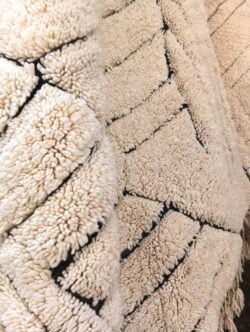
Beni Ouarain rug Dune Galerie
In all cases, the embroidery is added as ornamental motifs.
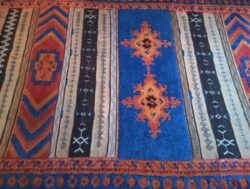
Glaoua rug 3 techniques Riad Dar Taliwint
The weaver can create her carpet with a single technique but several modes can also be juxtaposed to create relief patterns on the surface and special effects, according to inspiration and tradition!
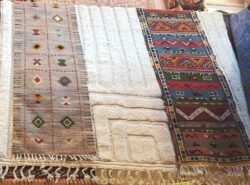
3 techniques, woven knotted, embroidered Dune Galerie
The Kilim or Hanbel is a flat woven rug. It is often light, of varying size and styles. It can be used as a prayer mat in its small dimensions.
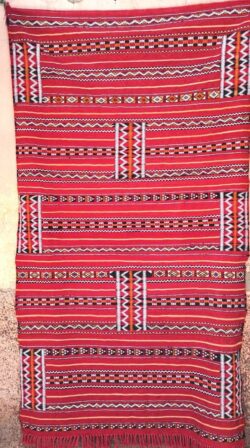
Kilim Zemmour Dune Galerie
A purchase for life!
It is necessary to remind once again that each carpet is a unique work of art! The purchase of a carpet is also a purchase for life! Your carpet, if well maintained, is made to last for a long… long…time.
No merchant will ever be exasperated by your hesitations, your doubts, your moods about the color, size, rendering, style and language of a carpet and the final price! At the beginning, he will spread for you a maximum of pieces so that the choice is wide and then he will eliminate them as you make your decisions. “I like the blue, yes but the red too, unless the white and black…”
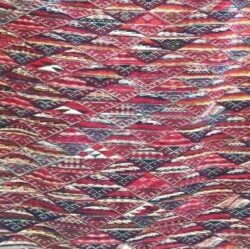
Ahknif rug Dune Galerie Mkhrbak detail
It is not so often that this type of acquisition is made. Once the carpet installed in your home, you will live for a long companionship with an object that will follow you with all the changes of your life! It’s not nothing!

